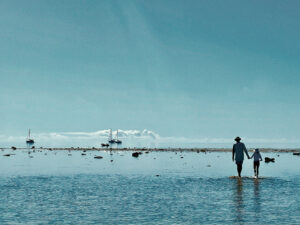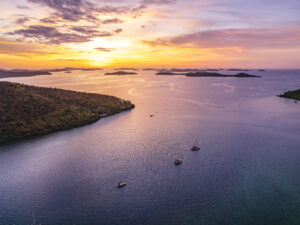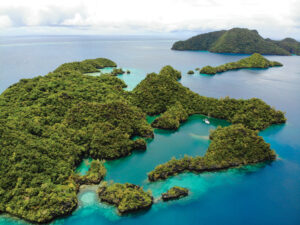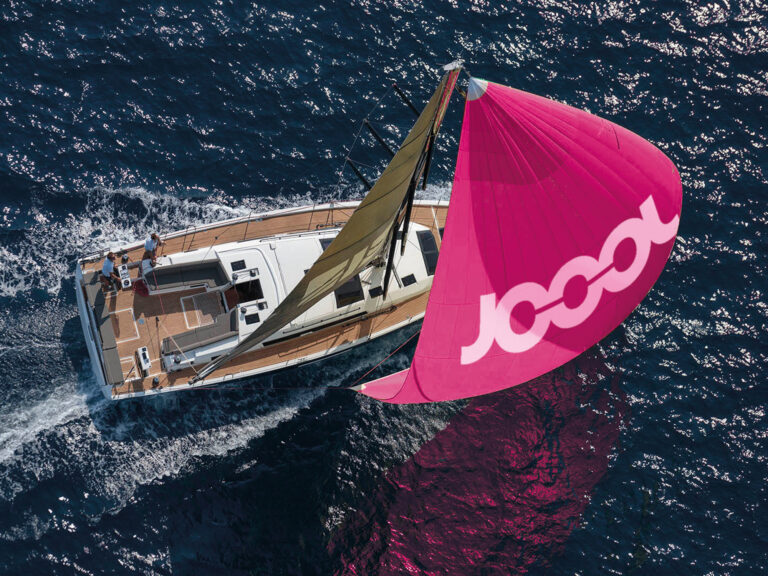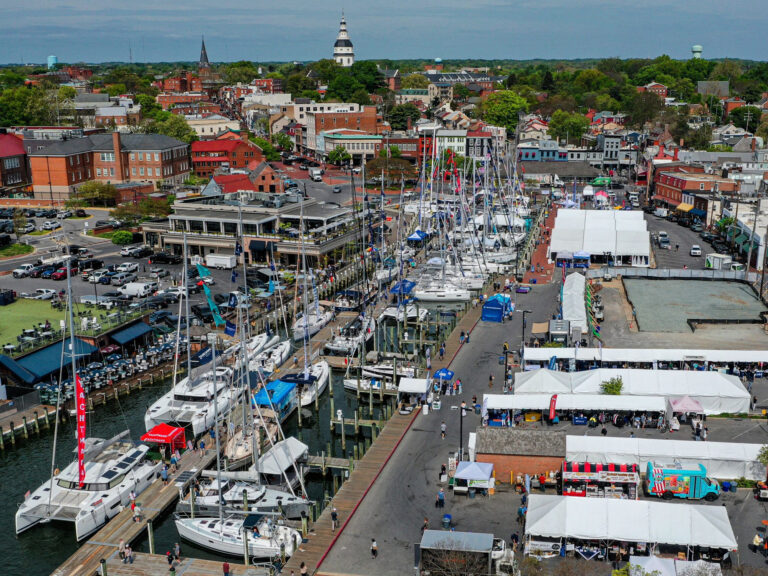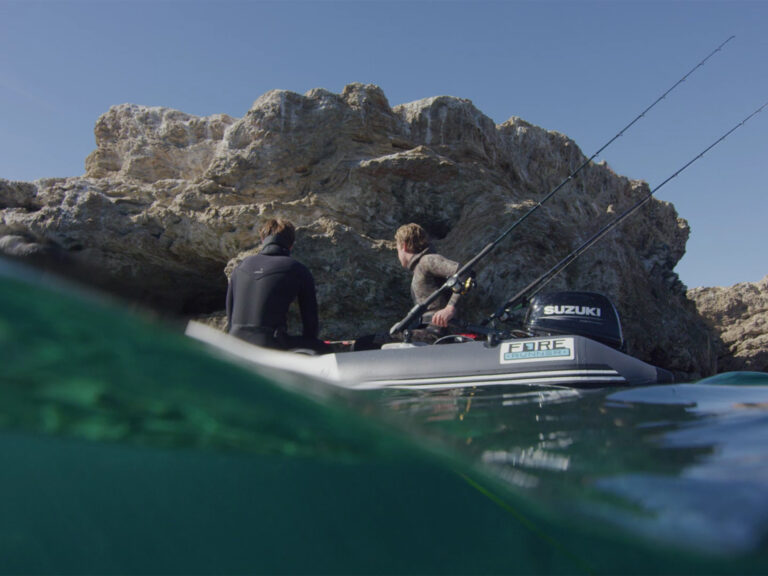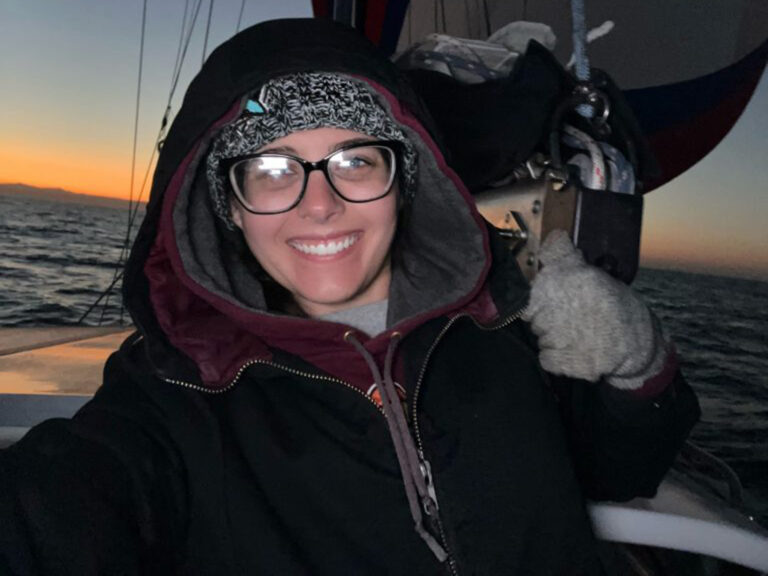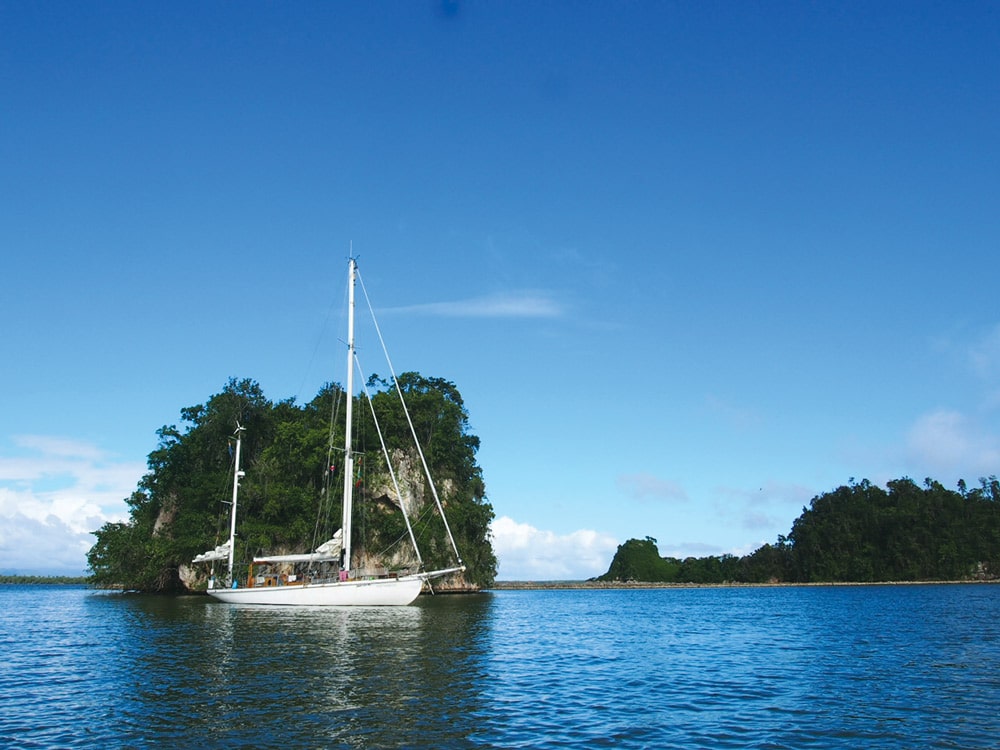
While cruising the Dominican Republic, my partner, Michael, and I stumbled across a hidden gem when we decided to check out an anchorage off the beaten track. Bahia de San Lorenzo lies on the southern coast of Samana Bay and is a gateway to Los Haitises National Park.
Bright-green palms peep their heads above the dense forest bordering the 6-mile perimeter of the bay. Mountains rise up in the background, misty from the last rain, and patches of yellow sand are sprinkled beneath. Birds of prey and frigate birds circle above the treetops, and shoals of fish leap out of the water in unison.
The spectacular karst landscape (a topography formed from soluble rocks such as limestone) and wild untouched vegetation made us feel as if we’d entered another world, one from many years ago. We half expected creatures with long necks and three horns to trample through the forest at any moment.
We anchored Pantagruel, our 60-foot classic wooden yawl, in 4 meters of water, close to the ranger station just visible among the undergrowth, and took our dinghy to the shore, where a wooden pier jutted out from a small palm-tree-lined beach. The two rangers didn’t speak any English, and our Spanish is very limited, but one of them beckoned us to follow him around the corner to an entrance to a series of caves. He led us inside and proceeded to give us an impromptu guided tour. The ranger pointed out interesting limestone formations along with faces etched into the stone walls — pictographs and petroglyphs drawn by native Taino people hundreds of years ago — and tracked down small bats hanging upside down in the nooks and crevices above us. We wove our way in and out of openings in this underground cavern, admired pools of water, clambered up steep rock faces after our guide and swung down on tree vines.
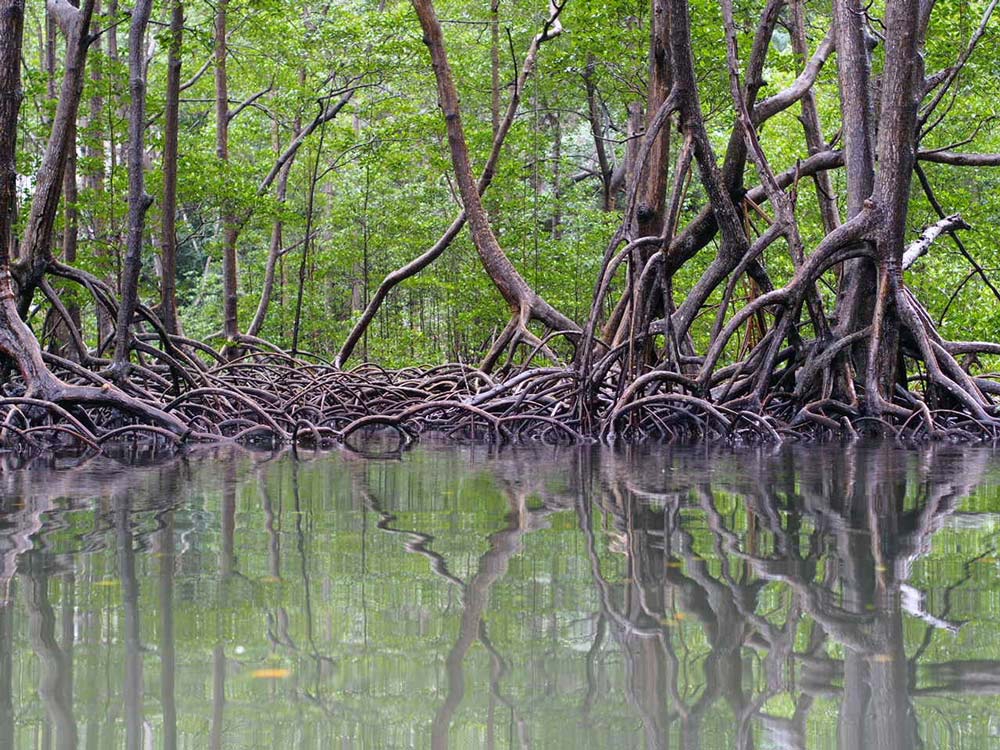
Michael and I kayaked around the rugged coastline, marveling at the mangrove forests and the imposing limestone cliff faces tinted pink and orange. Pelicans flew past, and dolphins appeared alongside. We then explored a river in our dinghy, twisting and turning for 2 miles inland, hoping we would remember our path back. Herons took flight as we approached their perches, and crabs scuttled up the mangrove roots. About a mile inland, we began to see mucky footprints along the water’s edge, stirring our imagination even more. Could it be a jaguar? Around another few bends we came across the source of the footprints — a cow.
As the sun began to set, we found ourselves completely alone in this peaceful oasis underneath a crimson sky. Where was everybody? Michael and I ate dinner on the foredeck in the moonlight, enjoying the tranquility of our surroundings. The only other signs of life came from the distant lights of fishing boats and the town of Santa Barbara twinkling 10 miles away. Ducks quacked as they flew past, and crickets could be heard chirping faintly as we retired beneath a star-filled sky.
After the crowded anchorages of the Lesser Antilles, this patch of paradise was a refreshing interlude, definitely not to be missed.

